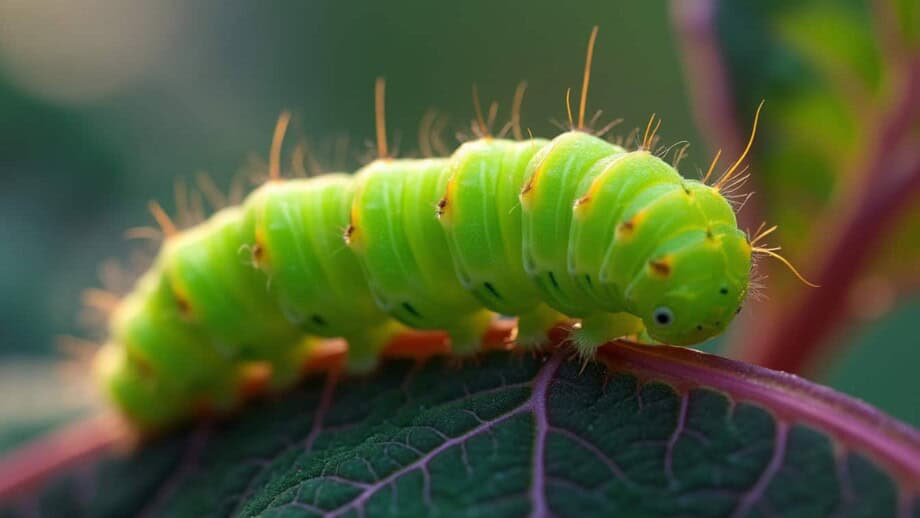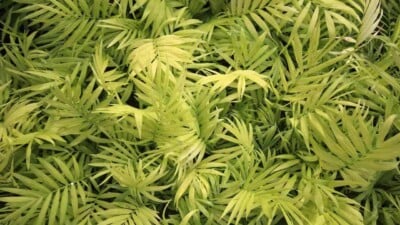Cabbage Looper Control: Everything You Need to Know

Widely distributed throughout North America, the cabbage looper (Trichoplusia ni) is a common and destructive pest most often found on cabbage-family, or cole crops.
The larger its larvae grow the more damage they do. In the larval stage, cabbage loopers eat three times their body weight in plant material a day, doing the most harm during the last few days of their development.
If you suspect cabbage loopers are infesting your crops, this guide will teach you how to identify them, which crops and plants they attack (hint: it’s not just crucifers!), and how to effectively control and get rid of cabbage loopers once and for all.
What is a Cabbage Looper?
Cabbage loopers (Trichoplusia ni) are a serious pest that infect mainly cruciferous plants such as cabbage, broccoli, cauliflower, and brussels sprouts. But, unfortunately, that’s not all that they attack and their damage can be quite widespread.
They’re present in nearly the entire growing season and are named for the way in which they move during their caterpillar stage; the insect arches its body when it moves in a looping motion.
They’re not to be confused with cabbage worms though, as cabbage worms are velvety green larvae with faint yellow stripes, while cabbage loopers are entirely yellow-green caterpillars that move in a looping motion due to a lack of middle legs.
How to Identify Cabbage Loopers?
Loopers, commonly known as inch worms, are most easily recognized by their unique method of movement in which they double up or “loop” as they inch along.
This characteristic trait comes from the absence of legs at the looping segments as it has three pairs of legs near its head and three pairs of prolegs on the abdomen. The six-legged looper could use the eight that other leaf worms have.
The larvae of the cabbage looper is a large (1-1/2 inch long), pale green caterpillar with a narrow white stripe along each side and several narrow lines down the back.
Adults are night-flying, gray moths (1-1/2 inch wingspan) with a silvery, V-shaped spot in the middle of each dusky forewing. Their scientific name and the phrase “Ni moth” are derived from this pattern on the adult moth’s wing that resembles the lowercase Greek letter ‘ni.’
Note: Discerning cabbage loopers from the larvae of garden webworms, diamond back moths, and other inch worm type larvae is not critical to their management. The same integrated pest management practices work on them all.
Life Cycle of a Cabbage Looper
Pupae spend winter attached to host plants or in nearby garden debris. Moths emerge in the spring and become widely dispersed including north into areas too cold for winter survival.
The adult cabbage looper moth deposits pale green, domed cabbage looper eggs on the plants, both on the top as well as bottom of the leaves. The eggs hatch in 3 or 4 days.
The destructive larval stage reaches full development in 2-4 weeks. They then form a pupa or cocoon, and they pupate in thin silk cocoons attached to the stems or undersides of leaves, and adults emerge within 10 days.
Loopers as far north as Canada will go through two to three generations in a year and several generations per year are possible in warmer areas.
Host Plants for Cabbage Loopers
These pests can feed on a wide variety of vegetables, crops, and even flowering plants. As their common name suggests, they mainly feed on crucifers but that’s unfortunately not all that they attack.
Let’s look at the host plants for these pests:
Crucifers: Cabbage, broccoli, cauliflower, radish, rutabaga, turnip, kale, watercress, mustard, and collards.
Other Vegetable Crops: Celery, cucumber, lima bean, lettuce, potato, spinach, sweet potato, tomato, watermelon, parsnip, cantaloupe, peas, and beets.
Field Crops: Cotton, soybeans, and tobacco.
Flower Crops: Alfalfa, hollyhock, snapdragon, sweetpea, and chrysanthemum
Damage Caused by Cabbage Loopers
Cabbage loopers occur as far south as Mexico and are established in commercial fields with insufficient rotation there and the United States.
They mainly attack cabbage crops including broccoli, cauliflower, and kale. Young larvae eat only from the bottom of leaves.
Older larvae chew large, irregular holes in the leaves of many plants. Loopers bore into the center of cabbage heads leaving behind masses of wet, slimy fecal matter. Once established, loopers are difficult to get rid of.
In addition to cruciferous plants, cabbage loopers will also attack lettuce, spinach, celery, cucumbers, and tomatoes. Each year, large amounts of pesticides are targeted at loopers on commercial fields, causing serious degradation of water and soil.
How to Control and Get Rid of Cabbage Loopers Effectively
Cabbage looper damage becomes ruinous at some point. Many gardeners tolerate a single tunnel into a cabbage or irregular scars on their Brussels sprouts.
This kind of damage may be unavoidable in the organic garden. But it’s important to take action at that point before eggs hatch and a second generation prepares to make slaw of what’s left. And an ounce of prevention? Well, you know what it’s worth.
- Keep a close, frequent eye on your cabbage plants, both outside and under leaves. Pick off the hungry, inching larvae and brush off eggs before they start an outbreak. The larvae can be drowned in a jar of soapy water for easy disposal.
- Cabbage looper larvae are easy, visible targets for predators. Take advantage of its many natural enemies by encouraging birds and beneficial insects to your garden. Certain herbs, including parsley, dill, fennel, coriander, and sweet alyssum, attract the kinds of insects and other creatures that prey on worms.
- Use pheromone traps to signal the arrival of moths to your garden.
- Cover plants with floating row covers to keep migrating moths from landing and laying eggs. This can make a significant difference if timed correctly.
- Wasps are natural enemies of cabbage loopers, so it’s recommended to release trichogramma wasps to destroy eggs.
- The natural, soil dwelling bacterium Bacillus thuringiensis or Bt-kurstaki is particularly effective on inch worms of all types. Use easily applied spray to hit worms and protect the leaves at the first signs of damage. BTK sprays do not harm honey bees or birds and are safe for use around pets and children.
- Spinosad, another biological agent derived from fermentation, is also very effective. It’s the active ingredient in Monterey Garden Insect Spray, a product classified as organic by the U.S.D.A. National Organic Program and listed for organic use by the Organic Materials Review Institute.
- Other botanical insecticides, like Safer’s Tomato & Vegetable Insect Killer or Pyrethrin Spray, can be used as a last resort.
- After harvest, bury spent cole crops to destroy cocoons before adults emerge in spring.
Rotating cabbage crops in a family sized garden is a good idea but not necessarily effective in preventing loopers on your plants. The night flying moths disperse widely and will find your vegetables no matter how far you’ve moved them. That’s why floating row covers to keep moths from landing on leaves and depositing eggs, are a good idea.













